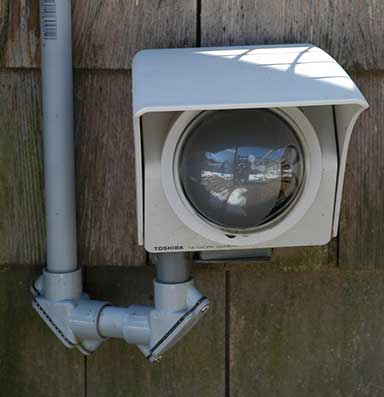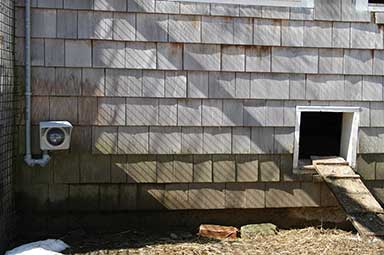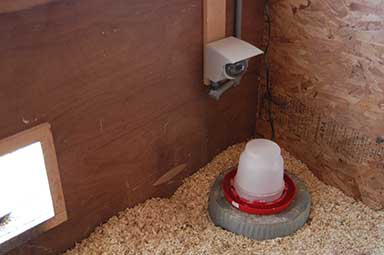[Check this page for more up-to-date information! -Terry]
I often get queries asking for advice on how to set up a system like The HenCam, after all, doesn’t everyone want to be able to keep an eye on their chickens when away, and share the fun of their animals with others? However our system is not easy to replicate – it’s technically challenging (I know because my IT Guy/husband is frequently working on it), nor is it inexpensive to run. But we love having the HenCam, and really like sharing it with all of you out there.
I honestly have no clue how it all works, and I get all woozy when Steve tries to explain it to me, so the details have yet to sink in. Therefore, today’s blog entry is written by my IT Guy – who deserves a big round of internet hand-clapping from everyone. (You’ll see why if you can wade all the way through this post.)
Here are some tips from my I.T. Guy and husband Steve:
There are various solutions depending on your budget and just exactly what you are trying to accomplish.
Web camera
The easiest (and cheapest) solution is to buy a web camera and attach it directly to your computer using a USB cable. These cameras are generally used for video conferencing and video instant messaging, but instead of pointing the camera at you, just point it out the window. Unfortunately the camera has to remain indoors and close to the computer (maximum length of a USB cable is 5 meters). Also typically you can only watch the video from that computer. For more information see this tutorial at HowStuffWorks.
Network camera
If the camera has to be far away from your computer then you need a network camera. These self-contained cameras are not attached to a computer, they just need power and a network connection (usually Ethernet, although some can also connect wirelessly with WiFi). These cameras have built-in webserver software, and a web browser on your computer is used to control the camera and view the video. If you intend to mount it outdoors then make sure your camera is weatherproof and can handle extreme temperatures.
If you want to view your camera from outside your home then you need an always-on Internet connection (e.g., cable modem or DSL). Your Internet service provider (ISP) must assign the camera a static IP address, or you can use dynamic DNS (DDNS) which most cameras support. One limitation is that network cameras allow only a small number of simultaneous users. The upstream bandwidth of your home Internet connection will also limit the number of viewers.
Supporting many users
If you want to allow many users to view your camera then consider a video hosting service that offers video streaming. Now your home Internet connection only has to upload a single stream from your camera up to the hosting service. The service takes care of the rest.
How The HenCam Works
We have two Toshiba IK-WB15A network cameras:

The camera itself is inside the clear plastic hemisphere. It can pan left-right-up-down to look in all directions. We keep it pointing towards the right (the camera’s left) along the wall of the HenCam barn:

The inside camera is in the corner above the waterer. You can see the metal heater that keeps the water from freezing:

These cameras are weatherproof and can operate well below freezing temperatures. Image quality is excellent.
Originally the power and Ethernet cables ran unprotected to the cameras. However one day Candy the bunny started chewing on them, so now all the wiring is safely inside electrical conduit.
Ethernet cables run underground from the house basement out to the HenCam barn. Our server (an Apple Xserve) runs a custom PHP script that copies the image from the cameras. This script also automatically generates the nighttime “The chickens are in bed” message. (We added this message because early HenCam viewers were mystified when all they saw was a black screen at night.) Our web server is Apache running under Mac OS X Server. Finally a Java applet streams video out to viewers. (Someday we hope to switch to Adobe Flash for an even better viewing experience.) Our Internet connection is a bonded dual T1 link with 3Mbits/sec upload bandwidth.
It’s been great fun putting all this together. Thanks for watching The HenCam!
